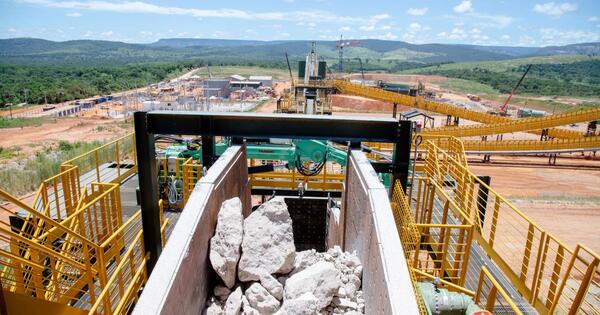The Brazilian subsidiary of British mining giant Sigma Lithium has firmly denied that indigenous peoples are present in areas affected by its Grota do Cirilo lithium mine, responding to accusations that have swirled around the project in recent months.
In a statement issued Monday, Sigma Brasil Desenvolvimento Sustentável sought to clarify its position following reports that indigenous communities might be impacted by the company’s operations in the Jequitinhonha Valley, located in Brazil
...
The Brazilian subsidiary of British mining giant Sigma Lithium has firmly denied that indigenous peoples are present in areas affected by its Grota do Cirilo lithium mine, responding to accusations that have swirled around the project in recent months.
In a statement issued Monday, Sigma Brasil Desenvolvimento Sustentável sought to clarify its position following reports that indigenous communities might be impacted by the company’s operations in the Jequitinhonha Valley, located in Brazil’s northeastern Minas Gerais state.
“No indigenous lands or communities are located within the region affected by Sigma’s mining activities,” the company asserted in its statement. “The nearest indigenous territory is more than 200 kilometers away from our operations.”
The declaration comes amid heightened scrutiny of mining companies operating in Brazil, particularly those involved in critical minerals extraction. Lithium, a key component in electric vehicle batteries and energy storage systems, has become increasingly valuable as global demand for green technology accelerates.
Sigma’s Grota do Cirilo project is considered the largest hard-rock lithium deposit in the Americas, positioning Brazil as a potentially significant player in the lithium supply chain dominated by Australia, Chile, and China. The mine began commercial production last year, with plans to produce 270,000 metric tons of lithium concentrate annually.
Environmental and indigenous rights groups have increasingly challenged mining operations throughout Brazil, citing concerns about water usage, pollution, and impacts on traditional communities. The Jequitinhonha Valley, where Sigma operates, is one of Brazil’s poorest regions but rich in mineral resources.
Germano Vieira, Sigma’s head of environmental affairs, emphasized the company’s commitment to thorough impact assessments. “We conducted extensive environmental and social studies before beginning operations, and these studies confirmed the absence of indigenous territories in our area of influence,” Vieira explained.
The company highlighted its engagement with local communities through public hearings and consultation processes, which it claims have helped shape its approach to sustainable mining practices. According to Sigma, these efforts include water conservation initiatives and land reclamation programs.
However, advocacy groups like the Mining Observatory (Observatório da Mineração) have questioned whether these consultations were sufficient, suggesting that traditional communities—even if not officially recognized as indigenous—may still face disruption from mining activities.
Brazilian anthropologist Lucia Andrade, who specializes in community impacts from extractive industries, notes the complexity of the situation. “The definition of ‘indigenous’ in Brazil can be contentious. There are communities with traditional ways of life who may not have formal recognition but still maintain deep connections to specific territories,” Andrade said.
Brazil’s National Indian Foundation (FUNAI), the government agency responsible for indigenous affairs, has not issued any statements regarding claims of indigenous presence near Sigma’s operations.
The controversy highlights the challenges facing the expanding lithium industry in Brazil, which the government has designated as strategic for the country’s economic development. President Luiz Inácio Lula da Silva has emphasized mining’s role in Brazil’s industrialization while promising stronger environmental and social safeguards.
Global automakers and battery manufacturers are closely watching developments at Grota do Cirilo, as they seek to diversify lithium supplies amid geopolitical tensions and growing demand. Sigma has already secured supply agreements with several major companies, including LG Energy Solution.
Market analysts suggest that social and environmental controversies could potentially affect Sigma’s standing with ESG-conscious investors and customers. The company’s shares, listed on the Nasdaq, have experienced volatility in recent weeks as these concerns have surfaced.
“The lithium market is particularly sensitive to ESG considerations,” noted Carlos Martinez, a commodities analyst at BNP Paribas. “Companies need to demonstrate impeccable environmental and social credentials to maintain their competitive edge in the green transition supply chain.”
Sigma maintains that its operations adhere to international best practices, including the International Finance Corporation’s Performance Standards and the Equator Principles. The company points to its water recycling system and dry-stacking tailings management as evidence of its environmental commitment.
Brazil’s Mining Secretary, Alexandre Vidigal, has previously stated that the government intends to strengthen oversight of mining projects while facilitating responsible development of strategic minerals like lithium.
As the global race for battery metals intensifies, the situation at Grota do Cirilo underscores the delicate balance mining companies must strike between meeting surging demand for transition minerals and addressing social and environmental concerns in their host communities.


